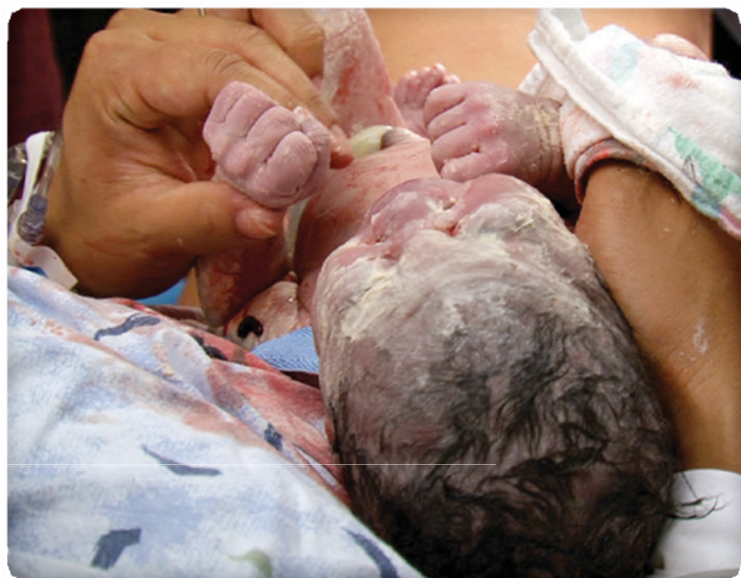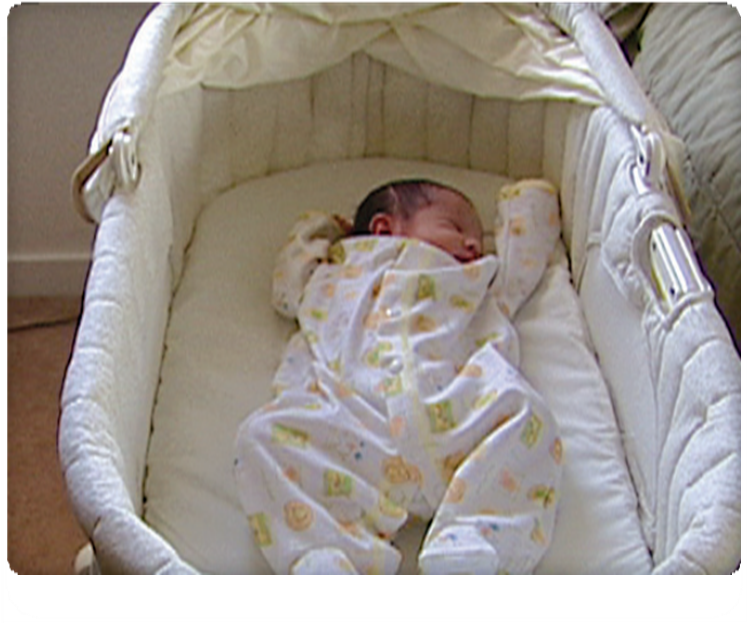Common Newborn Characteristics
- Vernix (cream-cheese looking substance on skin)
- Lanugo (soft hairs on her body)
- Cone-shaped head
- Enlarged breasts and genitals
- Birthmarks, dry skin, and milia (white bumps on the face)
Common Newborn Procedures
The hospital will perform basic procedures for your baby’s health and safety.
Many of these can be done while you hold your baby skin to skin on your chest.

White vernix covers the skin
- APGAR score (evaluation of your baby right after birth)
- Vitamin K shot (helps baby’s blood clot)
- Antibiotic eye ointment (check with your Healthcare Provider)
- Newborn screening test (looks for diseases that require immediate treatment)
- Hearing test
Crying
Crying is normal and is how your baby communicates. It can be frustrating, but when your baby cries, respond right away. Never shake, drop, throw, or hit your baby when she cries. This can cause serious injuries or death. If you are frustrated, put your baby in her crib and walk away to take a break.
Reducing the Risk of Sudden Infant Death Syndrome
SIDS is the leading cause of death in babies between 1 month and 1 year of age. The exact cause of SIDS is unknown, and although it’s very rare, you can help reduce the risk.

This new mother holds her baby skin to skin as newborn procedures are performed
- Always place your baby on her back to sleep
- Keep soft bedding, pillows, bumper pads, and toys out of the crib (use a crib that meets current safety standards)
- Have your baby sleep in a crib or bassinet in your room for at least the first 6 months, ideally for the first year
- Breastfeed your baby for as long as possible
- If you are tired and could fall asleep, don’t breastfeed on a sofa or cushioned chair
- Keep your baby away from cigarette smoke and keep your car and home smoke-free
- Do not overdress your baby or put a hat on her indoors (once at home)
- Once your baby is breastfeeding well (usually around 3-4 weeks), offer a pacifier when putting her to sleep
- Go to well-baby checkups and get your baby her routine immunizations
- Do not use products such as wedges or positioners that claim they can reduce the risk of SIDS

Always put your baby to sleep on her back
Download and Print
© 2017 InJoy Productions, Inc. All rights reserved.